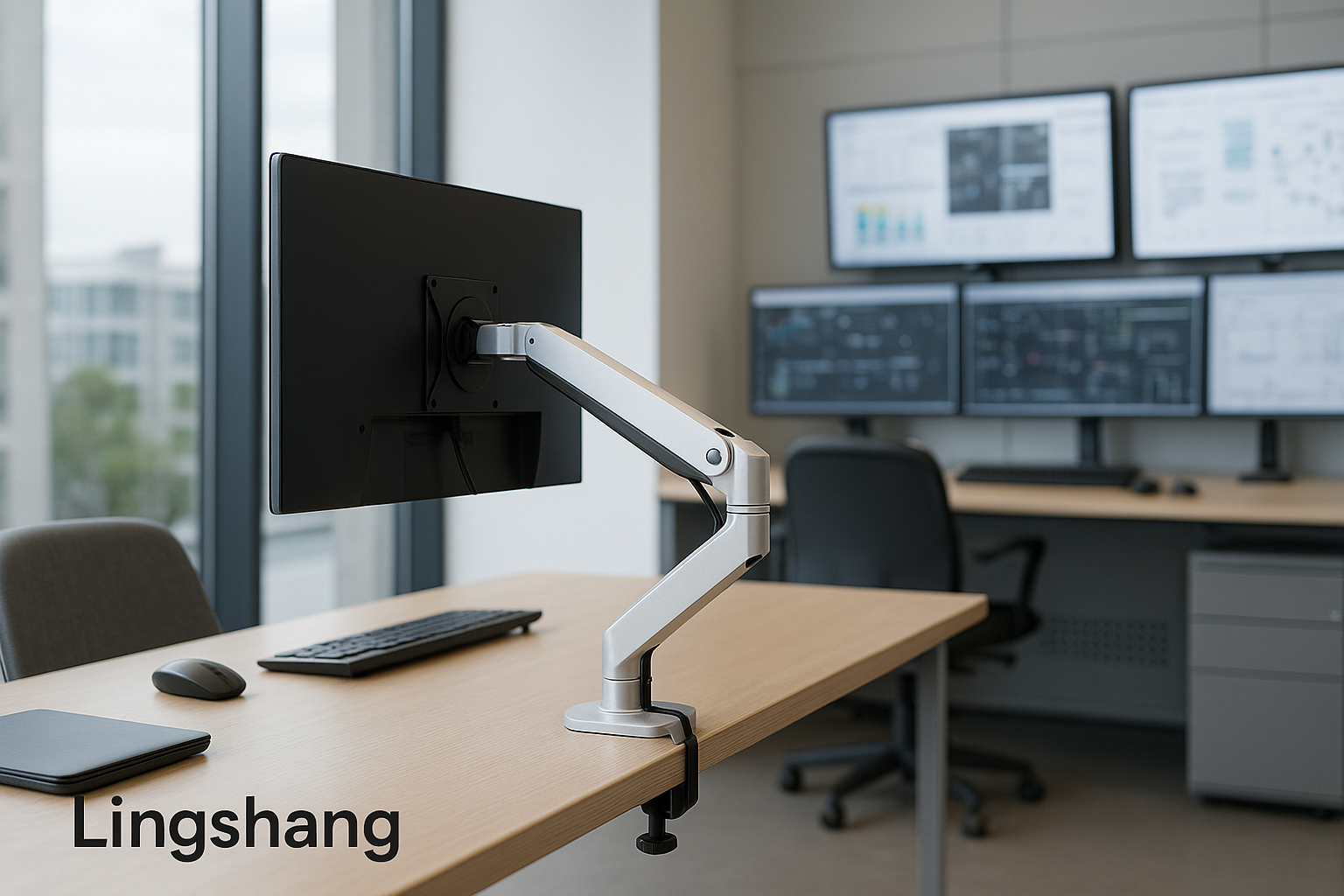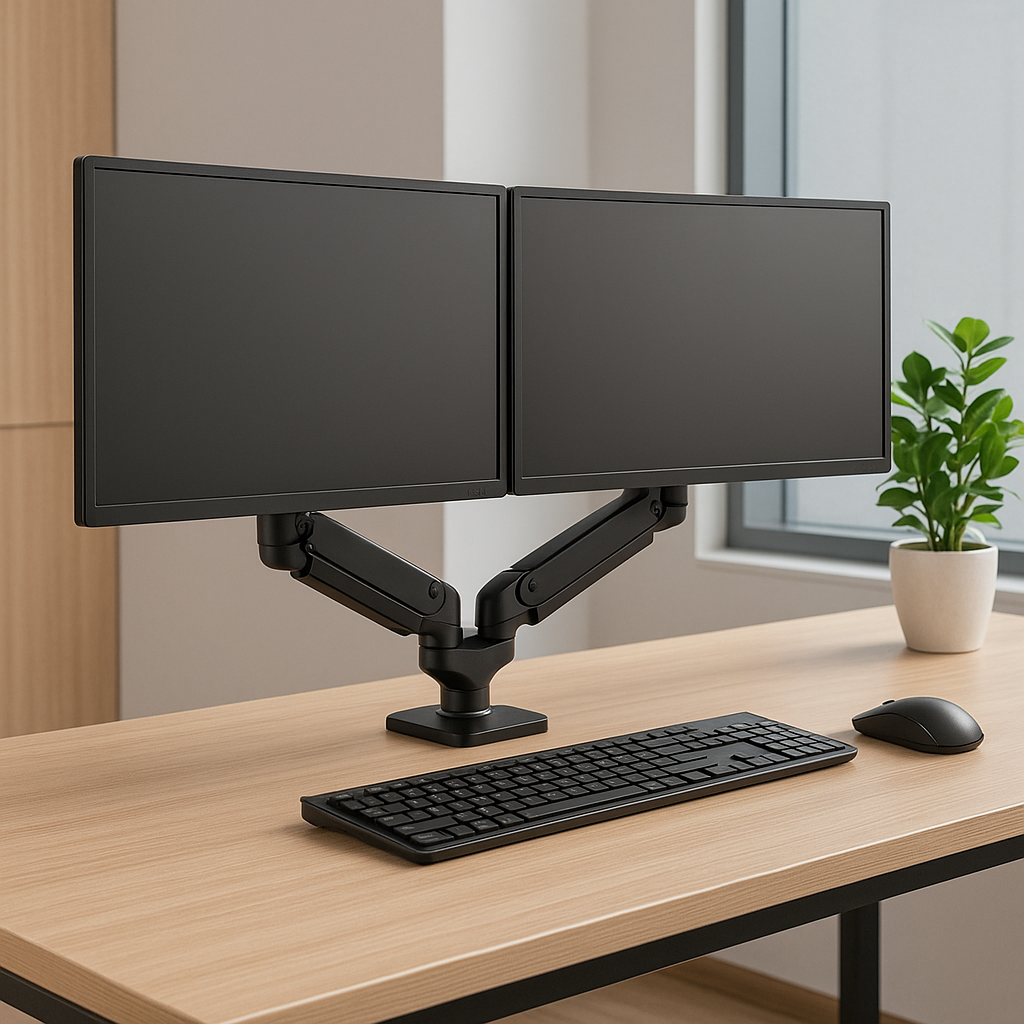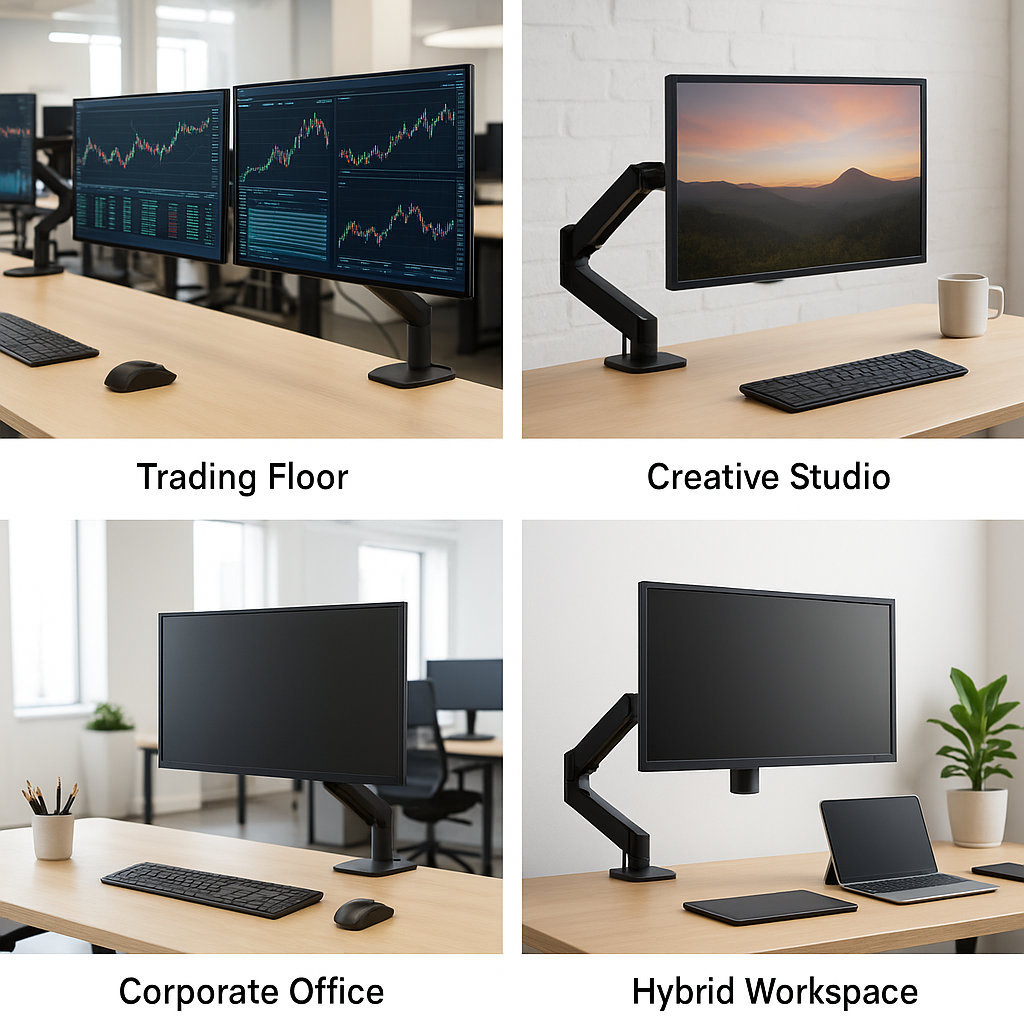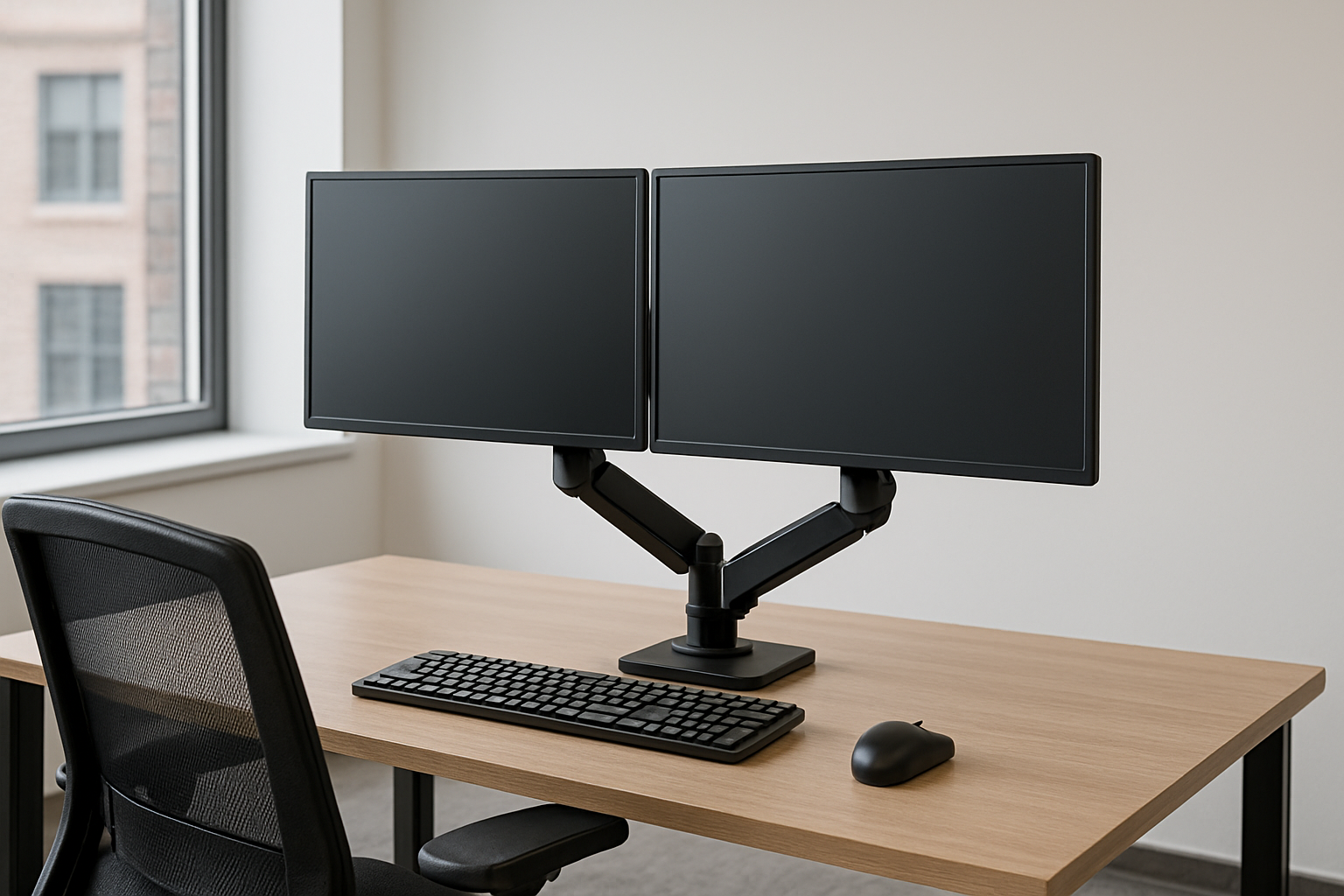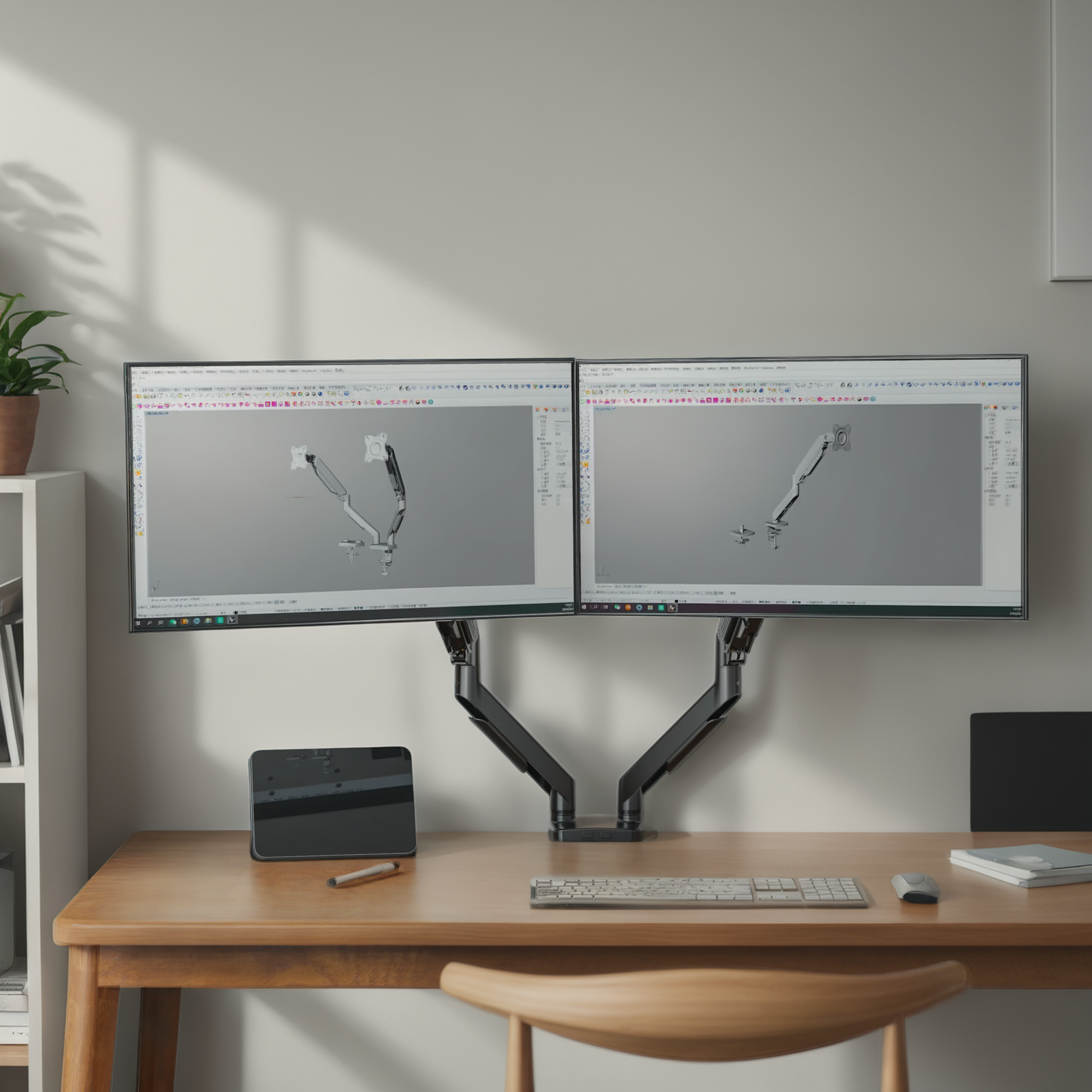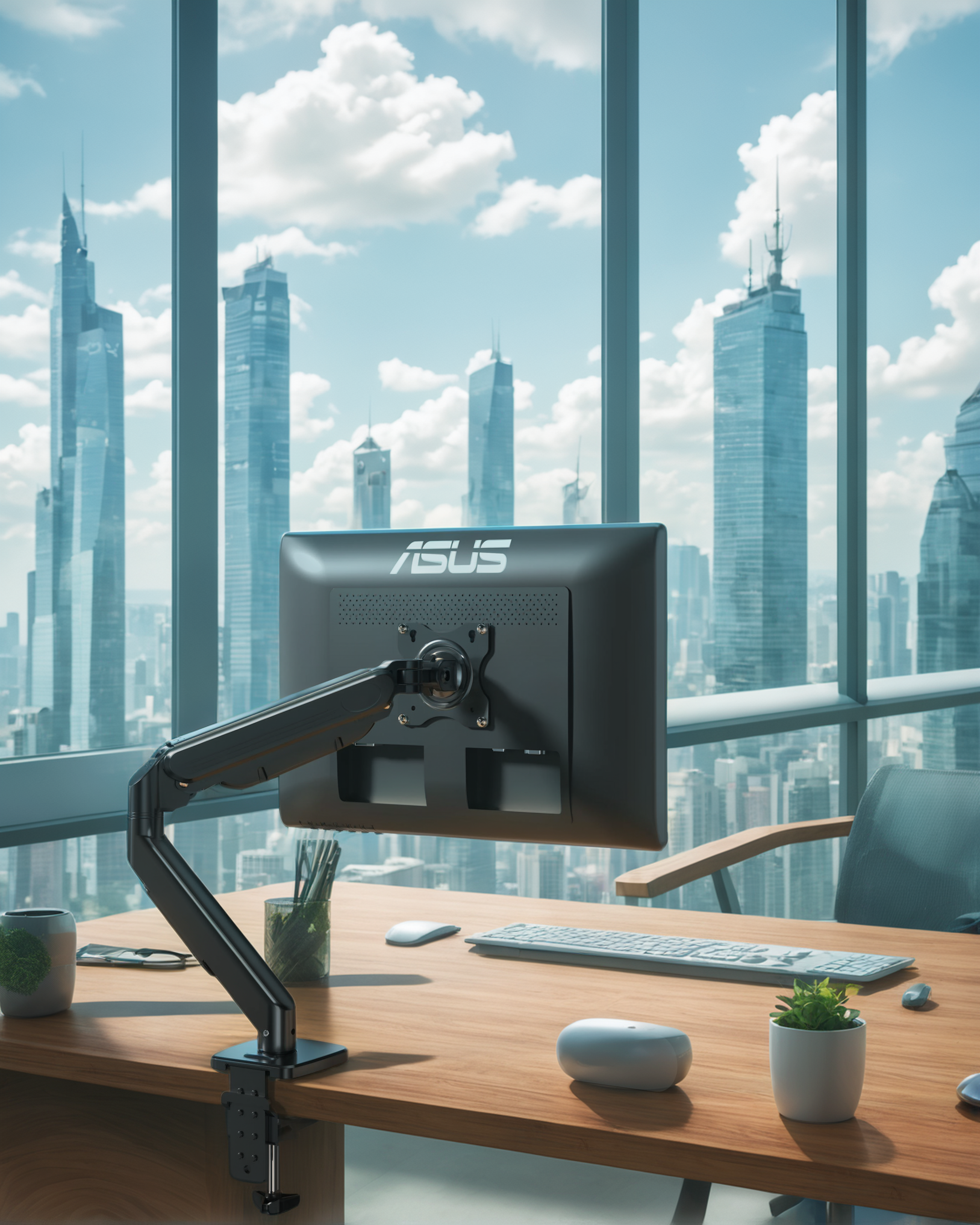
Monitor Arm Materials That Actually Matter: What You Should Know
You’ve compared brands, checked features, and even reviewed screen compatibility—but if you haven’t looked at thematerialof your monitor arm, you might be missing the most important factor. The right material means the difference between a smooth, stable workday and a drooping, frustrating setup.
The Real Problem: When Build Quality Fails
Many users underestimate the risks of choosing a poorly built monitor arm—until it’s too late.
-
“My screen keeps sliding down after a few hours.”
-
“The mount creaks every time I move it.”
-
“One arm cracked near the joint within 3 months.”
These complaints aren’t rare. A 2023 report fromMonitorGear Labshowed thatnearly 35% of customer complaintsabout budget monitor arms were related tomaterial fatigue or mounting failurewithin the first year.
If you use a monitor arm daily—as a designer, remote worker, coder, or student—these are not minor annoyances. They directly affect yourposture, productivity, and device safety.
Material Breakdown: What Goes Into Your Monitor Arm?
Aluminum Alloy
Why people love it: Lightweight yet strong, aluminum arms are often found in high-end ergonomic setups.
-
Pros: Rust-resistant, sleek finish, smooth movement
-
Cons: Slightly higher cost
-
Use case: Ideal for standing desks, dual screens, or creators needing flexible repositioning
Expert note: lingshang’s core lineup uses aircraft-grade aluminum to reduce vibration while supporting weight up to 9kg per arm.
Powder-Coated Steel
Why it’s trusted: Built to last and capable of supporting larger monitors.
-
Pros: High load-bearing, highly stable, budget-friendly
-
Cons: Heavier and slightly less aesthetic
-
Use case: Suits programmers, traders, and gamers with multi-monitor rigs
“For setups involving 32'' or ultra-wide monitors, steel is often the safest material to avoid torque fatigue,” notesDeskEngineering Weekly, 2024.
ABS Plastic or Hybrid Construction
Why people choose it: It’s cheap—but that’s often where the benefits end.
-
Pros: Lightweight, easy to install
-
Cons: Weak joints, flexing over time, heat-sensitive
-
Use case: Low-impact, short-term use (like student dorms or trial workstations)
Heads up: Plastic-only arms may support screens under 3kg, but long-term reliability drops fast.
How to Choose Based on Your Work Environment
Let’s go beyond theory. Here’s howdifferent professionsshould evaluate material choices:
| Profession/Use Case | Best Material | Why It Works |
|---|---|---|
| Graphic Designers / Editors | Aluminum Alloy | Precise, fluid motion for screen positioning |
| Financial Traders / Analysts | Powder-Coated Steel | Supports heavy dual or triple monitor arrays |
| Remote Workers / Students | Aluminum or Hybrid | Budget-conscious without sacrificing ergonomics |
| Streamers / Gamers | Steel or Aluminum | Needs stability, especially for wide curved monitors |
Don’t Overlook This: Build Quality + Movement Precision
Even a strong material won’t perform if thegas spring,hinge tension, orVESA connectionare poorly engineered.
Look for:
-
Load range supportclearly labeled by monitor size
-
Full range of movement: tilt, swivel, rotate with no slippage
-
Smooth resistance—not too stiff, not too loose
“Inconsistent tension is one of the biggest red flags of subpar internal mechanics,” saysErgoSetup Review, 2025.
What to Avoid
-
Plastic clips on high-load mounts
-
No certification or specs on load limit
-
Arms without defined VESA compliance (75x75 or 100x100)
-
No mention of internal spring or tension system
If it sounds too good for the price, it probably compromises material quality.
Make Your Setup Count — For the Long Run
Choosing the right material isn’t just about preventing monitor droop or keeping your screen safe. It’s about building a workspace that supports yourproductivity,health, anddaily confidencein your gear.
With lingshang’s product line, you get:
-
Precision-cut aluminum and steel structures
-
Durable powder finishesthat withstand time and touch
-
Engineering built for daily adjustment, not occasional tweaks
Browse proven options on ourhomepagefor reliable, tested monitor arms that support real-life work.
Need help matching your screen size or layout goals?Contact our support team— we’re here to help you build smarter.

